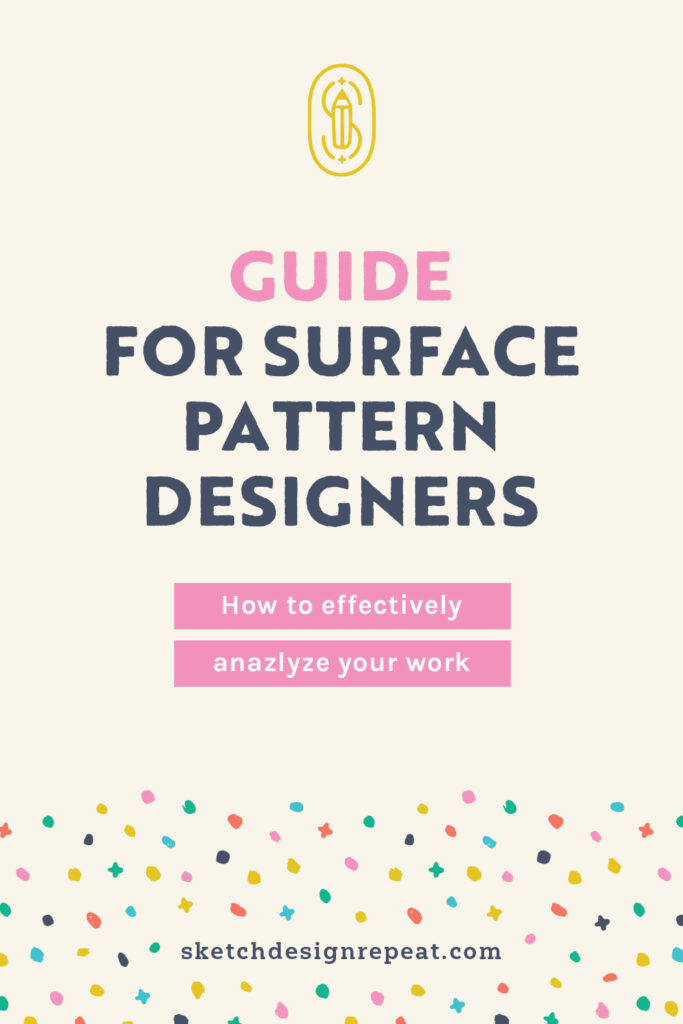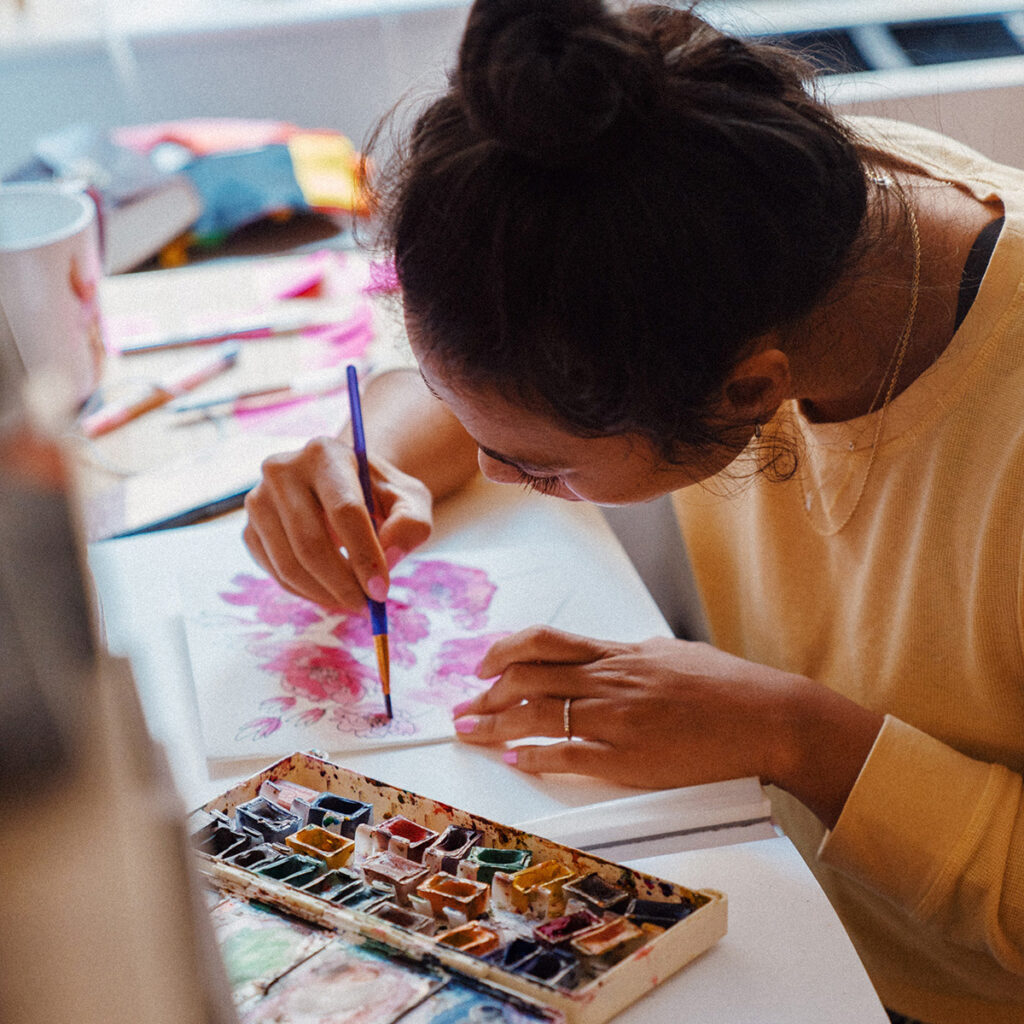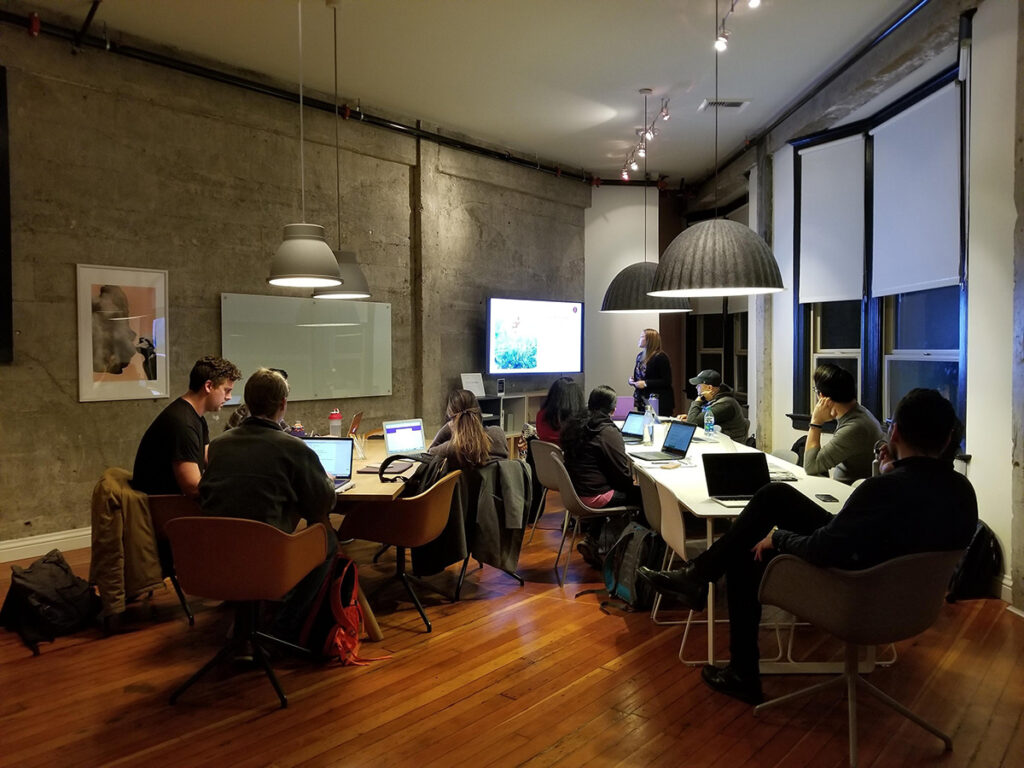Effectively analyzing your work is an important part of growing and succeeding as a creative. It’s also a very important step in the creative process because it helps to identify and solve issues you may have while working. Consistently evaluating your designs will help you develop a deeper understanding of your work and your design process, and will help to continuously improve your art. When you refine and hone your skills, you’ll set yourself apart with your ability to create accomplished designs and cohesive pattern collections.

Analyzing your own work
To analyze your surface pattern designs, consider the composition, color, repetition, scale, texture, style, and functionality. Some good questions to ask yourself when analyzing your work are:
- How are the motifs and elements arranged? Is there a clear focal point? Is there a balance of positive and negative space?
- Do the colors work well together? Is there enough contrast? Does the color palette complement the design?
- What type of repeat pattern did you create? Are there any breaks? Is it seamless?
- Do the motifs and elements in the design look proportional? Are they sized correctly to work well within the repeat pattern?
- Does the texture add to the overall design? Is it distracting? Does it make sense for the elements and motifs?
- Does the design express a particular style or trend? How does it contrast to other designs of the same style?
- Is the design functional for the intended purpose, such as fabric, greeting cards, home decor, etc.?
- Finally, would you buy this pattern or print? When we’re so close to our work it’s easy to get stuck on the quantity of work we’re creating and not the quality of what we’re creating.

Utilizing constructive feedback from others
Another valuable tool to help you analyze your work is to receive feedback from others. It’s easy to work in a vacuum and develop a limiting view of your work, especially if you work from home. Getting beneficial critiques from peers and professionals in the industry can be invaluable to obtaining more insight into your work. The key is to listen while being open to the possibility that something might be off or you may have missed the mark. Always respond professionally and respectfully. Then evaluate the feedback you receive, incorporate the most relevant parts to improve and enhance your work, and refine until you are satisfied with the final result. Ultimately, any feedback you follow should be in line with your personal vision and goals.

Community, mentors, and accountability partners
Community, mentors, and accountability partners can all play important roles in helping you analyze your surface pattern design work. Utilizing these resources can help you make informed decisions about how to improve your designs, grow your portfolio, and develop as a surface pattern designer.
Participating in a community of surface pattern designers (such as Sketch Design Repeat!) can provide you with different perspectives for your work. Members of these communities can offer advice and suggestions for new approaches and angles to see your work.
A mentor is someone who gives help and advice to a less experienced person. Working with a mentor can help with providing guidance and support as you navigate your work and growth within the industry. They can also help you identify areas you can improve and provide feedback. More often mentors are seen in a more organizational setting but to an extent you may find that an art rep can fill this role to some capacity.
Related Article: 7 Tips to be a Better Beginner in Surface Design
An accountability partner can help keep you accountable to your goals and provide you with regular feedback, encouragement, and support. Having an accountability partner can help you stay focused and make progress towards your work and goals.
In addition, there are also many resources available such as books, magazines, online forums, workshops, classes, and industry events. These are great assets to utilize to gain a deeper understanding of your work and develop your skills, allowing you to gain clarity in your abilities, which will help you to more effectively analyze your work.

A note of caution when seeking feedback
While analyzing your work is important for your growth as a surface pattern designer, there are some potential issues to watch for when analyzing your work:
- Be wary of over-analyzing. It can lead to perfectionism and restrict your progress.
- Analysis is only useful if you act on it. Make sure to take the insights you’ve gained and use it to improve your work.
- Trust your creative instincts and have confidence in your abilities. This will help you avoid undervaluing your work.
- It’s easy to work in a vacuum so it’s important to seek feedback from a diverse range of sources and perspectives so that you have a well-rounded understanding of the work you are creating for the surface pattern design markets.
- Exclusively relying on others for feedback and not using your own insight and experience can be creatively debilitating. While it’s important to seek feedback, you are ultimately the designer and have the final say in the direction of your work.
For many in the creative field, receiving feedback can be hard. Art and creativity are subjective and opinions can vary greatly. The surface pattern design field also involves a lot of technical aspects that can make it difficult for some who might not be as experienced be able to provide constructive feedback, particularly if one finds it hard to articulate their thoughts and ideas in a clear and concise manner. Also, it’s easy as designers to develop strong emotional attachments to our work, making it difficult to receive any type of negative criticism.
However, if you maintain a balance of continuously working on analyzing your work, developing your skills, and integrating feedback, it can become a rewarding experience and essential to growing into yourself as a surface pattern designer.
Integrating analysis into your creative process is a useful practice to cultivate and can lead to you creating better art, developing a deeper understanding of your process, and greater success in your career.

Written by Cody Alice Moore
Website: www.codyalicemoore.com
Instagram: @codyalicemoore
Class: Client Feedback Strategies for Creatives
Cody is an artist, illustrator, and surface pattern designer with over 15 years of experience. Cody discovered surface design while working for four years as an art buyer for a national photo lab. Since 2019, she has been creating art full-time for her budding portfolio and growing collection of licensed designs.
Great information. I’m a new surface designer and can use all the help I can get. I find it dificult to gain confidence in the way I put my designs in Spoonflower and other venues. Society 6 is another one. I’m also afraid to try to license my work. I need confidence that I don’t have. Thank you so much for the advise in this email